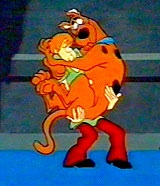 Animation
is as old as film itself. It was cartoons that first introduced
sound
and colour in the darkened movie houses of the 1920s, and by the 1930s,
the cartoon became a lucrative investment for the major studios.
Unlike feature films, there were no salaries paid to actors and the
public
didn't mind sitting through a good cartoon over and over.
Animated
characters became as popular as the major film stars of the day. Animation
is as old as film itself. It was cartoons that first introduced
sound
and colour in the darkened movie houses of the 1920s, and by the 1930s,
the cartoon became a lucrative investment for the major studios.
Unlike feature films, there were no salaries paid to actors and the
public
didn't mind sitting through a good cartoon over and over.
Animated
characters became as popular as the major film stars of the day.
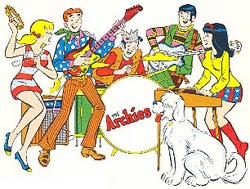 Known
in the early years as the ultimate baby-sitter, television was well
suited
for animation. Fledgling networks were able to fill up vacant
morning
time slots with second run theatre cartoons. At the same time,
cereal
companies found that sales skyrocketed when their products were
advertised
during children's programming. The youth of america became a new
advertising demographic. Known
in the early years as the ultimate baby-sitter, television was well
suited
for animation. Fledgling networks were able to fill up vacant
morning
time slots with second run theatre cartoons. At the same time,
cereal
companies found that sales skyrocketed when their products were
advertised
during children's programming. The youth of america became a new
advertising demographic.
Although
television catered
to North America's youth from the beginning, children's programming was
scattered throughout the day. It wasn't until the mid 1960s when
the three major American networks began to dedicate a block of air time
solely to the youth market. With a line of toy companies joining
in on the action, Saturday Morning Children's programming was
born.
By 1971, over 20 million children in America alone were glued to the
television
between 7AM and 2PM gobbling down sugar coated cereal and making early
christmas lists. After all, the toys could do anything and some
commercials
were better than the TV shows.
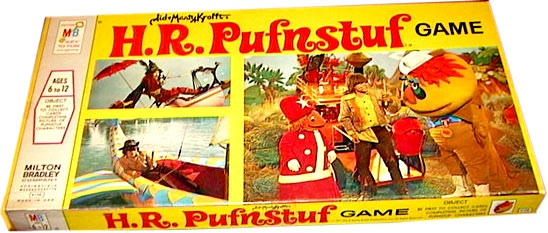
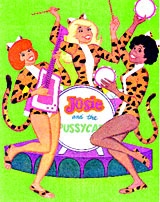 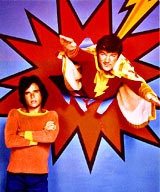 As
parents rarely watched Saturday morning cartoons with their children,
advertisers
quickly learned the important difference between family and children's
programming. With campaigns directed towards naive young minds,
many
commercials were so unscrupulous they made comic book promotions for
Sea
Monkeys look honest. At the same time, there was a growing
concern
that the programming itself was unsuitable for children. Several
conservative parent organizations began publicly speaking out in
regards
to dishonest advertising, scantily clad female cartoon characters and
immoral
behaviour. As
parents rarely watched Saturday morning cartoons with their children,
advertisers
quickly learned the important difference between family and children's
programming. With campaigns directed towards naive young minds,
many
commercials were so unscrupulous they made comic book promotions for
Sea
Monkeys look honest. At the same time, there was a growing
concern
that the programming itself was unsuitable for children. Several
conservative parent organizations began publicly speaking out in
regards
to dishonest advertising, scantily clad female cartoon characters and
immoral
behaviour.
Although
networks reverted
advertising time to instructional programming such as "Schoolhouse
Rock"
it was too little too late to tame the outspoken groups. It was
then
the FCC was forced to step in and set up ground rules for children's
television.
Saturday Morning's fate was sealed. With strict guidelines placed
on new cartoons, writers and producers were left little room for
imagination.
The rules included, believe it or not, that "no cartoon character was
allowed
to show individualist thought contrary to a group. If such
individualism
was to be shown it had to end with a moral punishment." Other
rules
were added throughout the years to curb dress codes, violence,
suspense,
and the pairings of male and female characters.
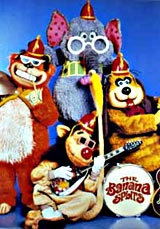 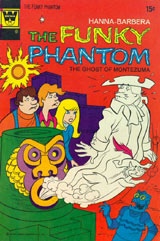 At
the same time, cartoons were becoming more expensive to make.
Animation
can take up to twenty four drawings a second -- more if additional
characters
are in the scene. But many studios were dwindling the quality
down
to three frames a second, only allowing for mouth and eye
movement.
Costume changes were rare. But if children noticed Shaggy and
Scooby
running past that same cabinet 20 times while fleeing the ghost it
didn't
stop them from watching. At
the same time, cartoons were becoming more expensive to make.
Animation
can take up to twenty four drawings a second -- more if additional
characters
are in the scene. But many studios were dwindling the quality
down
to three frames a second, only allowing for mouth and eye
movement.
Costume changes were rare. But if children noticed Shaggy and
Scooby
running past that same cabinet 20 times while fleeing the ghost it
didn't
stop them from watching.
By the
mid 70s, some networks
opted for an easy way out by switching to live action shows. Such
productions were not yet harshly regulated. Some live action
shows
were exciting. Many were flops that couldn't compare to the good
old cartoon. By the 1980s, Saturday Morning television slowly
faded
away. That once popular time slot has not since been able to
garner
audiences one-tenth as large as they were during the 1970s heyday.
This
cache is dedicated
to the golden era of Saturday Morning television when cartoons were hip
and the characters were groovy.
THE
CACHE
Zoinks!
You've got
your work cut out for ya. Grab that clue, Scooby Doo.
In order
to solve the
puzzle you must convert the letters in the mathematical formula into
numbers.
To do this match the cartoon characters in the photographs below to
their
theme songs. When a match is found, substitute the letter in the
formula for the number above the TUNE in the TUNE TABLE.
For
example, the picture
with the letter T is from a 70s cartoon called "These are the
Days."
The song is located in column 4 in the TUNE TABLE. Therefore, T =
4. When all the matches are found for the formula, simple math
calculations
will reveal the last five digits of the North and West co-ordinates.
| N 49
K + J - KK =__
W - B + HH =__
Q + H - N = __
R + M - D = __
LL + GG - S = __
|
W122
EE + V - BB - F =__
X + O + AA =__
G - DD + A = __
P - CC - FF = __
U - E - L = __
|
Not all
photographs nor
songs are needed to complete the puzzle. This cache is designed
to
be difficult so no hints will be given until a FTF is logged.
It's my
hope that this
puzzle will bring back some fond memories. When you log this
cache,
I'd be interested to know if any of these songs have been perpetually
playing
in your head all the way to the cache. If so, I've done my
job.
heh heh heh.
|

